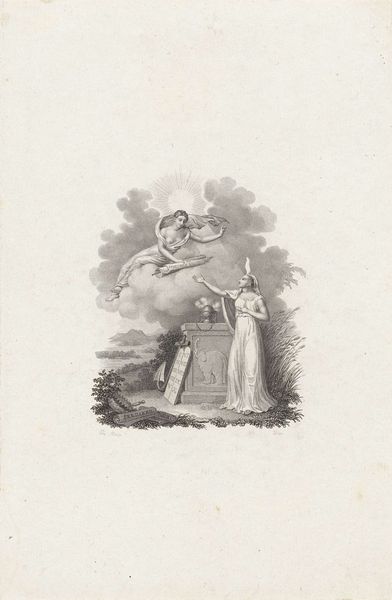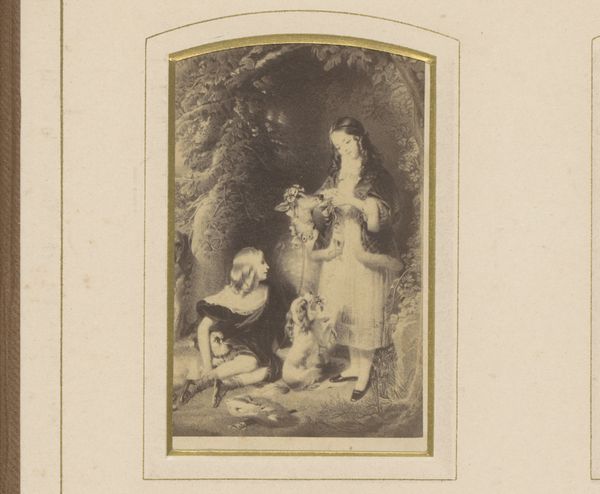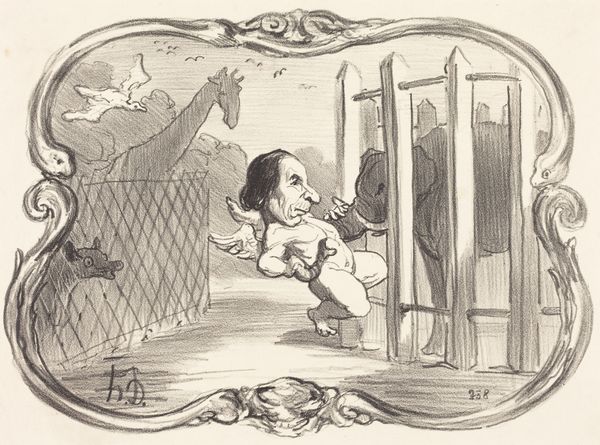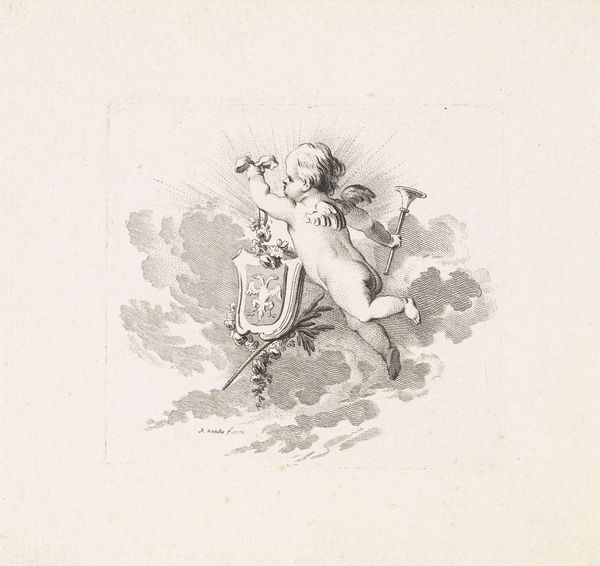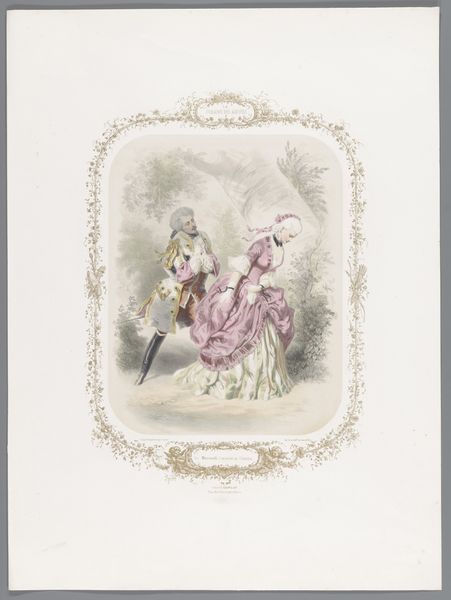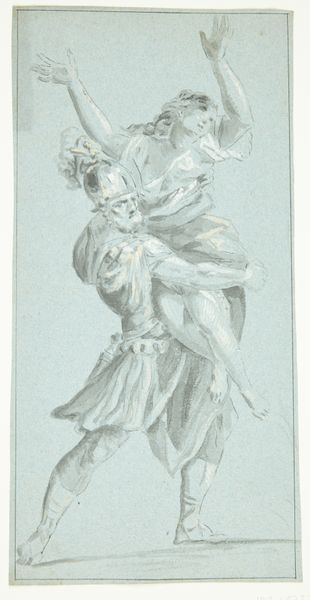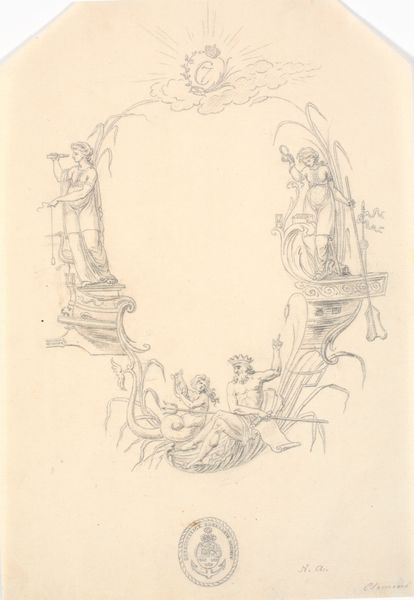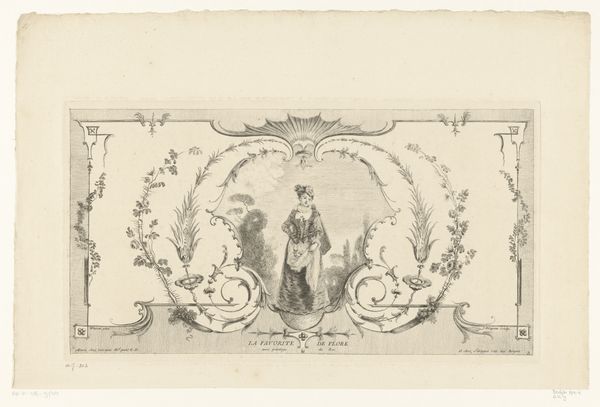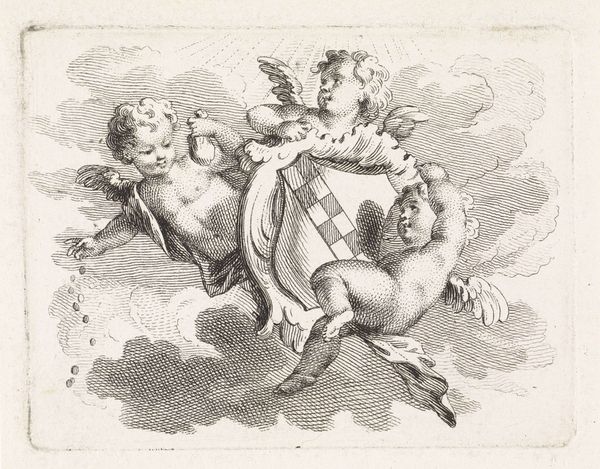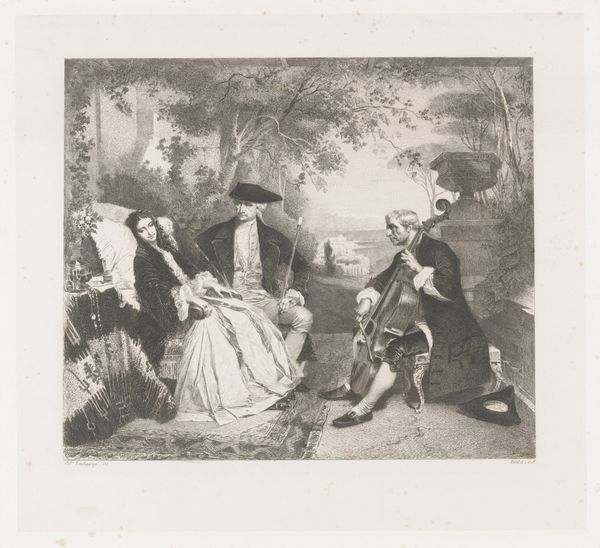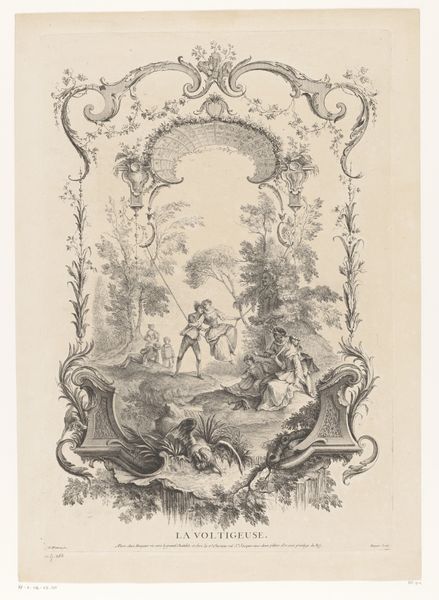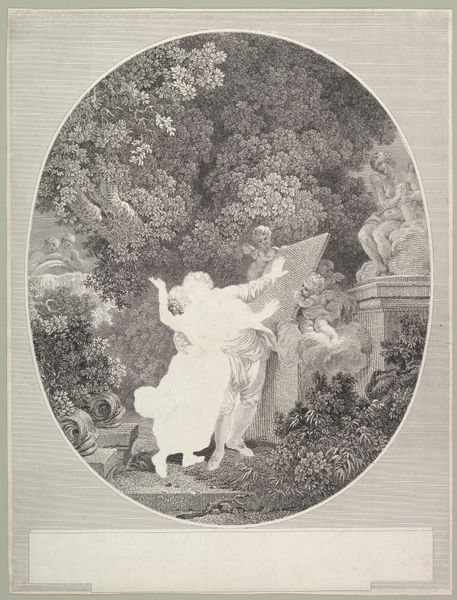
drawing, lithograph, print, ink
#
portrait
#
drawing
#
lithograph
# print
#
caricature
#
figuration
#
ink
#
romanticism
Copyright: National Gallery of Art: CC0 1.0
Curator: Before us, we have Honoré Daumier’s lithograph, “Le Secret confié au dieu faune,” created between 1850 and 1851. What strikes you upon first viewing? Editor: The tonal range. I immediately notice the stark contrast between the dense black ink of the cherub’s wing and the crisp white of the Faune, but also the subtle lines describing the landscape. Daumier achieves a dynamic yet refined look in the printing process. It creates this strange juxtaposition of elegance and caricature. Curator: Indeed, the tension is palpable. It’s formally quite arresting – consider how Daumier has arranged the figures. The whispering cherub's sharp angles sharply contrast with the classical form of the faun. This subversion suggests a commentary on traditional values and the intrusion of the profane. Editor: I'm more interested in the socio-political context of mass production of the work. As a lithograph, its reproducibility implicates Daumier in a broader sphere. This was a deliberate choice – a means of disseminating satirical messages to the public on a scale that would otherwise have been impossible with painting. It brings a subversive subject, such as revealing a “secret” into the domestic and civic spheres. Curator: The medium undeniably plays a key role in the distribution, but its artistic achievement lies within the structural arrangement, its formal elegance. Observe the use of line and shadow – Daumier guides your eye around the artwork. What secret could they be sharing? Editor: The ‘secret’ is less the content of the revelation and more the potential social capital afforded by exclusive knowledge. Consider the resources – labor, materials, access to printing technologies, patronage – required to make and distribute this work. These reveal Daumier's world far better than speculation of any clandestine truth. Curator: I can't help but consider the allegorical nature of this scenario. What if this knowledge being exchanged reflects Daumier's intimate understanding of artistic genius? Editor: Perhaps we can conclude with this: By acknowledging the material, by appreciating the production, and not just the illusion, one finds Daumier’s critique of his contemporary environment more meaningful. Curator: Or that, by understanding the structural elegance with which he executes his craft, we come closer to understanding the secrets within.
Comments
No comments
Be the first to comment and join the conversation on the ultimate creative platform.

